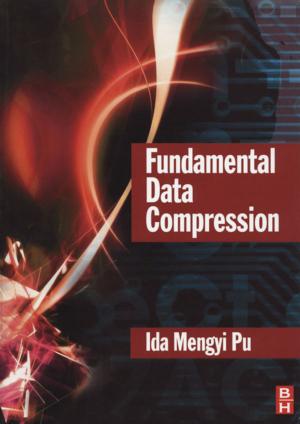Handbook of Electrochemistry
Nonfiction, Science & Nature, Science, Chemistry, Physical & Theoretical| Author: | ISBN: | 9780080469300 | |
| Publisher: | Elsevier Science | Publication: | December 11, 2006 |
| Imprint: | Elsevier Science | Language: | English |
| Author: | |
| ISBN: | 9780080469300 |
| Publisher: | Elsevier Science |
| Publication: | December 11, 2006 |
| Imprint: | Elsevier Science |
| Language: | English |
Electrochemistry plays a key role in a broad range of research and applied areas including the exploration of new inorganic and organic compounds, biochemical and biological systems, corrosion, energy applications involving fuel cells and solar cells, and nanoscale investigations. The Handbook of Electrochemistry serves as a source of electrochemical information, providing details of experimental considerations, representative calculations, and illustrations of the possibilities available in electrochemical experimentation.
The book is divided into five parts: Fundamentals, Laboratory Practical, Techniques, Applications, and Data. The first section covers the fundamentals of electrochemistry which are essential for everyone working in the field, presenting an overview of electrochemical conventions, terminology, fundamental equations, and electrochemical cells, experiments, literature, textbooks, and specialized books. Part 2 focuses on the different laboratory aspects of electrochemistry which is followed by a review of the various electrochemical techniques ranging from classical experiments to scanning electrochemical microscopy, electrogenerated chemiluminesence and spectroelectrochemistry. Applications of electrochemistry include electrode kinetic determinations, unique aspects of metal deposition, and electrochemistry in small places and at novel interfaces and these are detailed in Part 4. The remaining three chapters provide useful electrochemical data and information involving electrode potentials, diffusion coefficients, and methods used in measuring liquid junction potentials.
* serves as a source of electrochemical information
* includes useful electrochemical data and information involving electrode potentials, diffusion coefficients, and methods used in measuring liquid junction potentials
* reviews electrochemical techniques (incl. scanning electrochemical microscopy, electrogenerated chemiluminesence and spectroelectrochemistry)
Electrochemistry plays a key role in a broad range of research and applied areas including the exploration of new inorganic and organic compounds, biochemical and biological systems, corrosion, energy applications involving fuel cells and solar cells, and nanoscale investigations. The Handbook of Electrochemistry serves as a source of electrochemical information, providing details of experimental considerations, representative calculations, and illustrations of the possibilities available in electrochemical experimentation.
The book is divided into five parts: Fundamentals, Laboratory Practical, Techniques, Applications, and Data. The first section covers the fundamentals of electrochemistry which are essential for everyone working in the field, presenting an overview of electrochemical conventions, terminology, fundamental equations, and electrochemical cells, experiments, literature, textbooks, and specialized books. Part 2 focuses on the different laboratory aspects of electrochemistry which is followed by a review of the various electrochemical techniques ranging from classical experiments to scanning electrochemical microscopy, electrogenerated chemiluminesence and spectroelectrochemistry. Applications of electrochemistry include electrode kinetic determinations, unique aspects of metal deposition, and electrochemistry in small places and at novel interfaces and these are detailed in Part 4. The remaining three chapters provide useful electrochemical data and information involving electrode potentials, diffusion coefficients, and methods used in measuring liquid junction potentials.
* serves as a source of electrochemical information
* includes useful electrochemical data and information involving electrode potentials, diffusion coefficients, and methods used in measuring liquid junction potentials
* reviews electrochemical techniques (incl. scanning electrochemical microscopy, electrogenerated chemiluminesence and spectroelectrochemistry)















